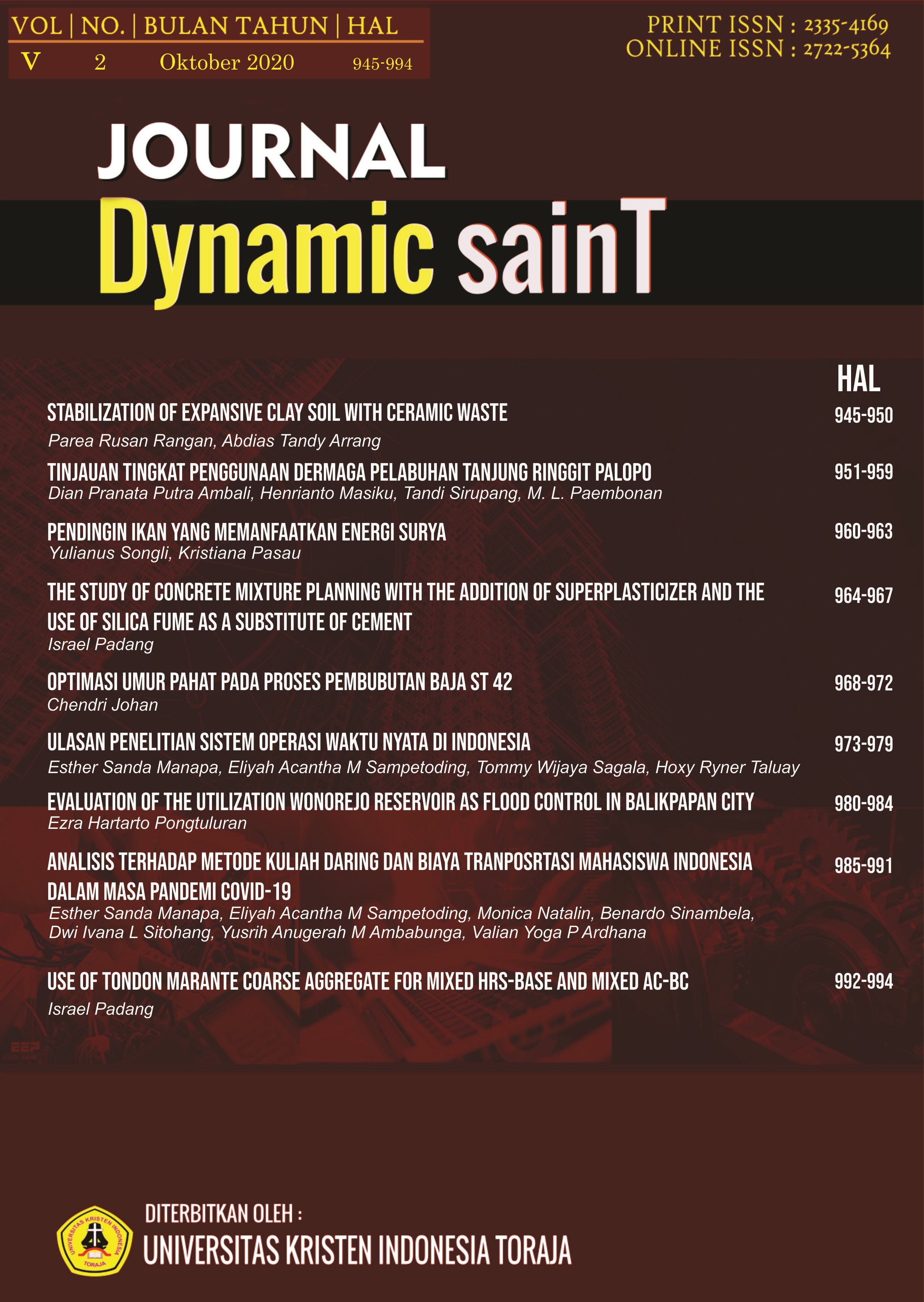Stabilization of Expansive Clay Soil with Ceramic Waste
Case Study: Tanete land, Lembang Limbong, Rembon District, Tana Toraja Regency
DOI:
https://doi.org/10.47178/dynamicsaint.v5i2.1098Keywords:
Expansive Clay Soil, Soil Stability, Ceramic WasteAbstract
Expansive clay is a soil that has high fluctuation of shrinkage and contains minerals that have a high potential to expand when exposed to water, so this type of soil requires special handling so that it can be used as a basis for construction. One effort that can be used to improve the soil is by stabilizing the soil by adding other materials, namely ceramic waste. Ceramic waste is an unused residual material that is usually found in building construction. This study aims to determine the effect of ceramic waste in stabilizing and increasing the bearing capacity of expansive clay with the percentage of adding ceramic waste to expansive clay, namely: 0%, 5%, 10%, 15%. The location for taking ceramic waste is in Rembon, Tana Toraja district and for expansive clay taking is in Tanete, Rembon District, Tana Toraja Regency. The test was carried out at the civil engineering laboratory of the Christian University of Indonesia Toraja. From the CBR (California Bearing Ratio) test, it was obtained for native soil (0%) = 1.12%, and for the addition of ceramic waste (5%) = 2.10%, for (10%) = 4.03%, for (15%) = 6.09% . The results showed that the addition of ceramic waste could increase the bearing capacity of expansive clay.Keywords: Expansive Clay Soil, Soil Stability, Ceramic Waste.
References
Bokko, J., Johan., Rangan, P.R., Bunga,E.2019. Analisis Kelongsoran Jalan Poros Sangalla-Batualu Dengan Program Plaxis.
http://www.journals.ukitoraja.ac.id/index.php/dynamicsaint/article/view/690
Bowles, J. 1984. Sifat-Sifat Fisis dan Geoteknis Tanah Mekanika Tanah. Edisi Kedua. Erlangga. Jakarta.
Das, B. M. 1995. Mekanika Tanah. Prinsip-Prinsip Rekayasa Geoteknis. Jilid II. Erlangga. Jakarta.
Hardiyatmo, Hary Christady. 2002. Mekanika Tanah 2. PT. Gramedia Pustaka Utama. Jakarta.
Hardiyatmo, Hary Christady. 2012. Mekanika Tanah 1. Edisi VI. Gadjah Mada University Press
Hardiyatmo, Hary Christady. 2014. Tanah Ekspansif. Gadja Mada University Press. Yogyakarta.
Hendrawan, Sonny,2005 pemanfaatan limbah bahan industri keramik untuk stabilisasi tanah lempung.
Mochtar, I., B., 2000. Teknologi Perbaikan Tanah dan Alternatif Perencanaan pada tanah Bermasalah, Jurusan Teknik Sipil FTSP ITS, Surabaya.
Rangan,P.R., Irmawaty, R., Amirudin, A., & Bakri,B.(2020). Strength performance of sodium hydroxide-activated fly ash, rice straw ash, and laterite soil geopolymer. IOP Conf.series: Earth and Environmental Science 473 (2020) 012123 IOP Publishing (pp.1-10). Makassar.
https://iopscience.iop.org/article/10.1088/1755-1315/419/1/012026/meta
Sri Prabandiyani Retno Wardani, Muhrozi, Andi Retno Ari Setiaji, Danny R. Riwu. Stabilisasi Tanah Ekspansif dengan Menggunakan Tanah Putih untuk Tanah Dasar di Daerah Godong, Kabupaten Grobogan Jawa Tengah.










